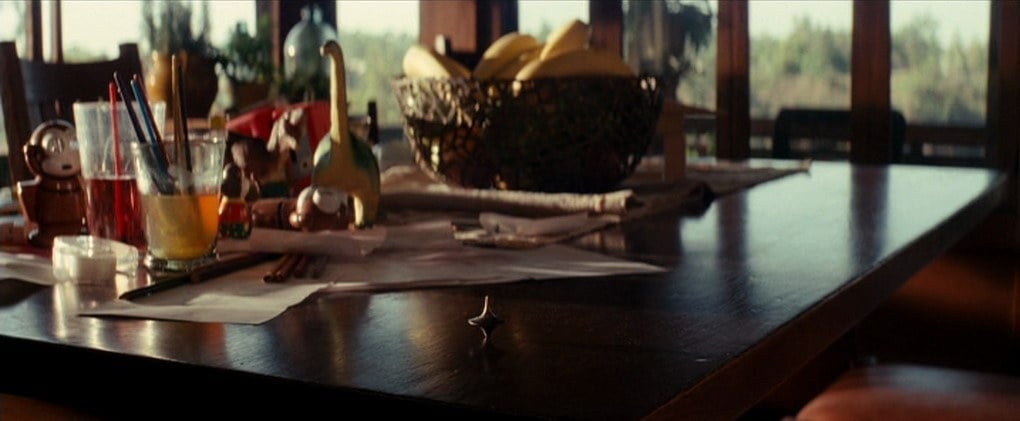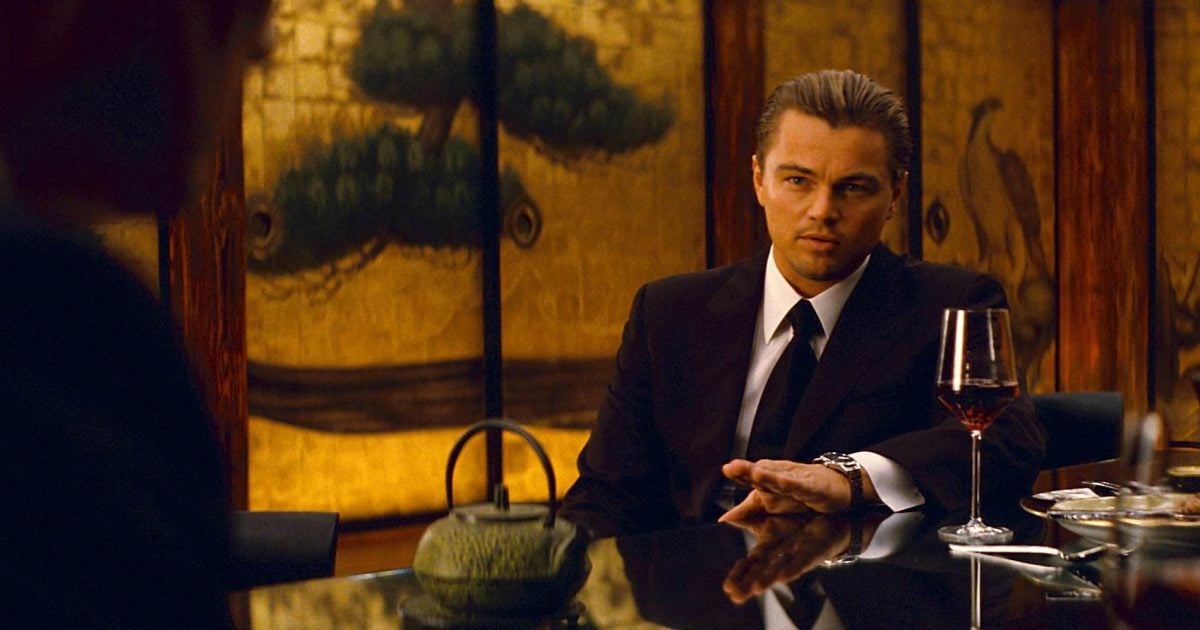The hallway sequence required particular beats of action, and stunt coordinator Tom Struthers worked closely with the actors to determine what would be possible and also safe. “A couple of key rigs we used to achieve effects in camera were very specifically inspired by 2001 [AC June ’68] and the way in which Stanley Kubrick portrayed the lack of gravity,” says Nolan. “I was interested in taking those ideas, techniques and philosophies and applying them to an action scenario. I challenged Tom Struthers, Chris Corbould, and Wally and his team to put all the energy of an action scene into a setup that we could shoot with these extraordinary rigs. I think the result is an interesting hybrid; it’s surreal and quirky, but it’s got a pounding action rhythm.”
“Safety was a huge concern, and it was very painful for the actors because they had to bounce off the walls,” says Pfister. “They had to learn to jump at just the right moment. We had a crewmember with a hand poised over the kill switch at all times.”
Another elaborate set is a hotel bar where gravity suddenly shifts and the weather outside undergoes a sudden, dramatic change. Corbould and his crew built the entire set to tilt 30 degrees. The set windows looked out on greenscreens that would be replaced with vistas in post. To effect the lighting change, Pfister’s crew wired all fixtures to a dimmer board. The scene’s initial lighting required a sunset feel, so Molebeams were gelled with 2Vi CTS. 32 July 2010 As that light dimmed, 60’-long softboxes filled with Maxi-Brutes and covered with Grid Cloth were brought up to create overcast light. “That’s one scene where the camerawork and lighting become surreal, but it’s all part of the storyline,” says Pfister. “It’s still a naturalistic approach in that every source is motivated. What’s very unusual is the way it changes. Combined with the set tilting, it creates a very unsettling sensation.”
Laying out the setting’s elevator shaft horizontally was Nolan’s idea, and Pfister notes that doing so “allowed us to give the scene scope that could not have been achieved any other way. In your average Hollywood movie, that would be a visual-effects-heavy scene, but in keeping with our policy of doing as much in-camera as possible, we got it for real, and it was wonderfully successful.”
After wrapping up in England, the production spent a week in Paris and then two weeks in Morocco. The shoot then brought the filmmakers to Los Angeles, where they spent three weeks shooting an action sequence downtown in the rain. The biggest challenge there, according to Pfister, was blocking the sun with Condors and huge flags. “Ray Garcia did a phenomenal job blocking light in resourceful ways and helping to make the rain look credible,” says the cinematographer. “When I was fretting about harsh sunlight that occasionally sneaked into a shot, Chris, who is always happy to speed things along, would remind me, ‘Well, it is a dream.’”
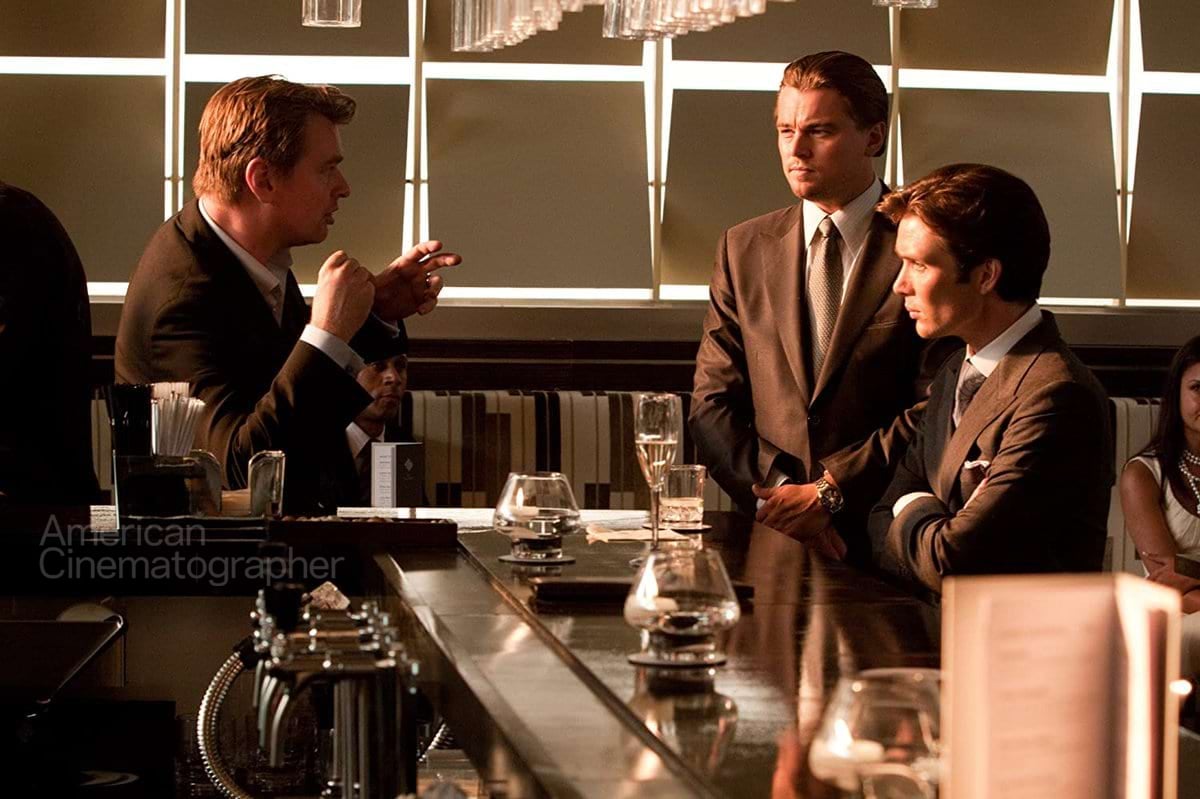
One segment of the downtown shoot called for a full-sized train to hurtle down a city street without actual rails. To achieve this, production designer Guy Dyas built a mock locomotive onto the chassis of an 18- wheeler. “It was fantastically detailed,” says Pfister. “We shot that, along with many of our downtown L.A. action sequences, in 65 mm using an Ultimate Arm.” As the train approached, Pfister, working handheld, tried a number of things to make the frame shake, and in the end he simply shook the camera. “The simple solution is often the right one,” he observes with a laugh.
For high-speed work, the filmmakers were constantly reaching for the highest possible frame rates. Many such scenes were filmed in daylight, but several were done in artificial light. In one scene, shot on the third floor of a hotel in downtown L.A., Cobb’s dream is interrupted when he falls backward into a bathtub full of water. To heighten the effect, and to communicate Cobb’s passage from a dream state to consciousness, Nolan asked for a speed ramp. The goal was 1,000 fps, necessitating the faster Photo-Sonics camera and a 7-stop light loss. “We knew we needed a lot of punch to shoot at 1,000 frames with that camera,” says Geryak. “The lenses it requires only go to a stop of4.5.1 believe I was getting the equivalent of f/90 on the edge-light, measuring the light at 24 fps. We achieved that by setting two Condors outside the windows that each held two Arrimax 18K Pars with spot reflectors; they were less than 15 feet from Leo. We also had two 12K Pars banging into the ceiling for ‘a bit of fill’ — the stand-in actually started steaming!” Pfister notes, “The shot looks great. You can see individual beads of water, which gives the scene an otherworldly feeling.”
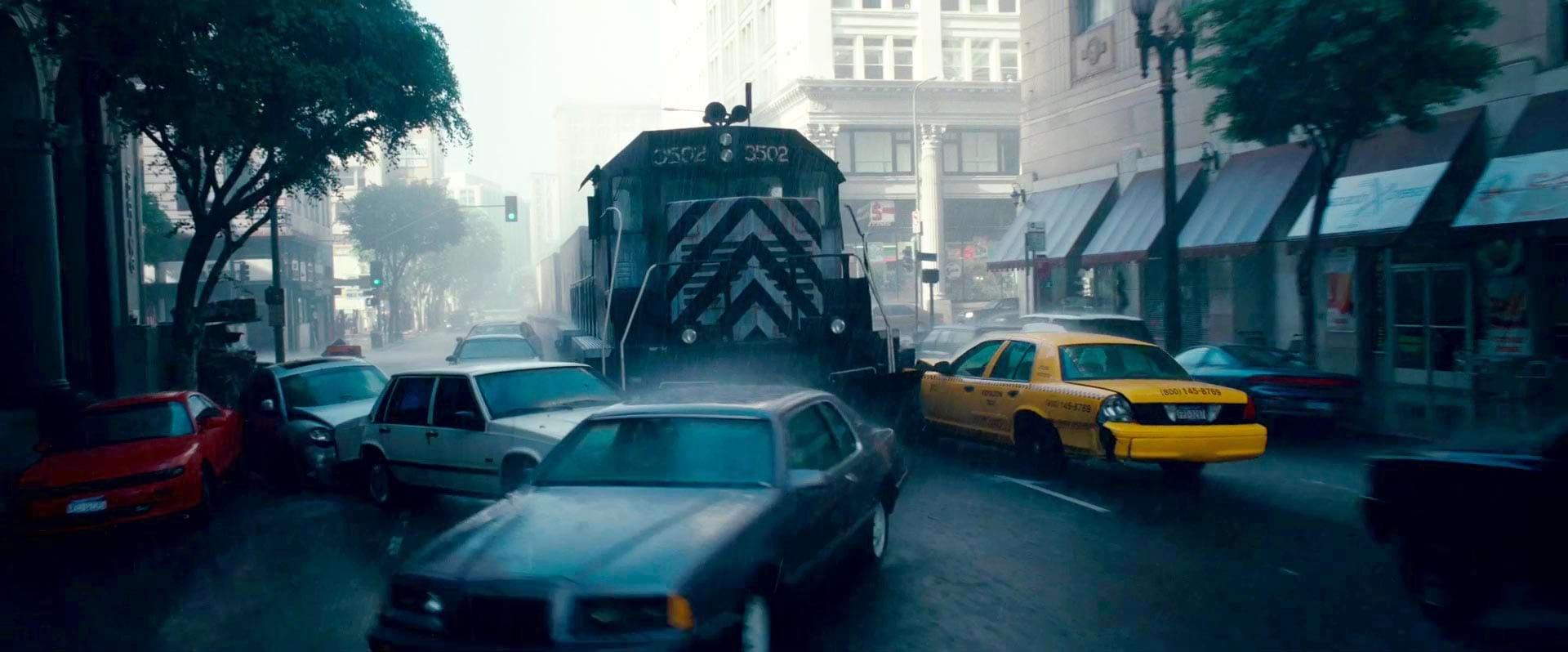
Another complicated shot involved rotating a van on its horizontal axis 360 degrees. The target frame rate was 1,000 fps, leading Geryak to construct what Nolan jokingly dubbed the “tunnel of expense.” Geryak explains, “We essentially built a tunnel out of truss. We had six rows of five 18K Fresnels lined up around the van, aiming straight in. The van spun within that tunnel. The result was basically a wraparound blanket of daylight. We didn’t have any lights on the ground, so as the van spins, the intermittent darkness communicates that they are spinning and flipping over.”
Onstage at Warner Bros., a portion of a Japanese fortress interior was built and destroyed for the production; this footage was melded with exteriors shot at Abalone Cove in Palos Verdes, Calif. For another sequence, the interior of a wintry mountain redoubt was built onstage at Universal Studios. In the scene, pieces of the floor fall away as the fortress crumbles. To achieve the effect practically, the production built the main level of the set higher than normal, so chunks of the floor could collapse and fall away on cue. The set was surrounded by large greenscreens, which were later replaced by snowy Rocky Mountain vistas.
“In order to have enough green outside and still give the feel of daylight coming through the windows, the lights and the greenscreen needed to be positioned a considerable distance back, which, of course, meant that the greenscreens had to be bigger,” says Geryak. “We knew the actual location, near Calgary, would have soft ambient light, and that the sun would be behind the mountain, so we built about a dozen 20-foot-long soft boxes that we could raise and lower. They could be configured to follow the path of the windows, which had an irregular triangular shape.” The crew hung space lights just outside and above the windows to create the feel of natural skylight that could stream in more strongly when the floor fell away.
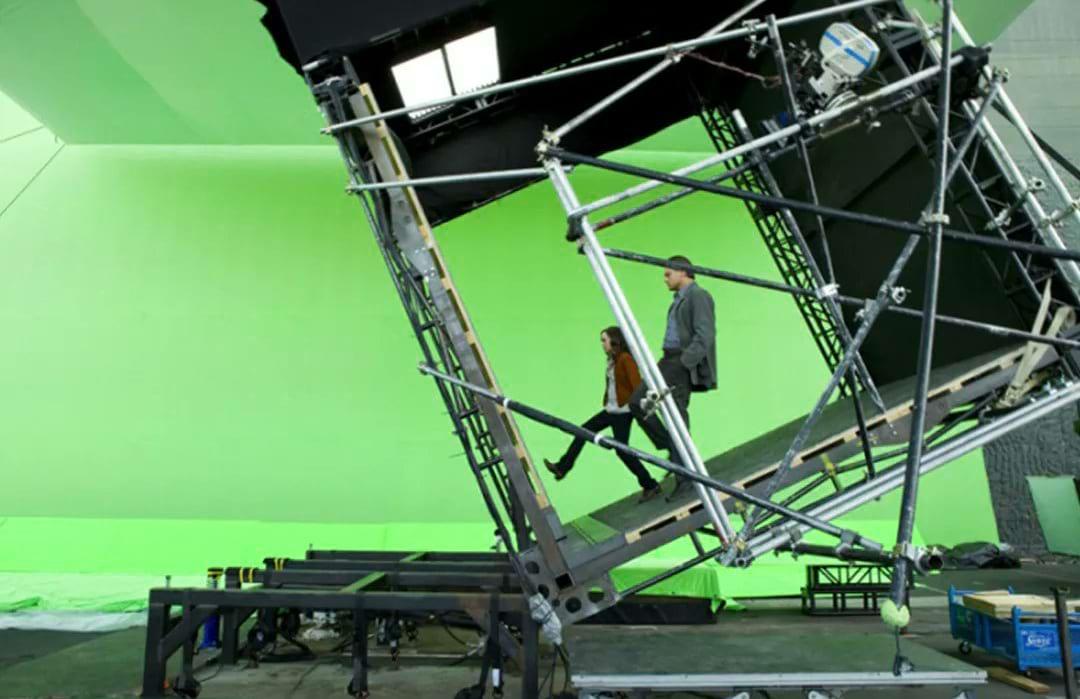
The exteriors for this sequence were filmed in Kaninaskis Country, in the mountains west of Calgary in Alberta, Canada. Two versions of the mountain fortress were built, one full-sized and the other a miniature that was eventually blown up. Extraordinary ski footage was shot by ski-unit director of photography Chris Patterson, whose work “simply blew us away,” says Pfister.
Because Nolan intended to intercut a lot of material in the edit, he asked Pfister to give each location and dream level a distinctive feel. “We wanted to have the color palette change quite a bit when we go from one location to another,” says Pfister. “Calgary has a sterile, cool look; the hallways have warm hues; and the van scenes are neutral. You immediately know where you are, even if we cut to a tighter shot or to something that is slightly out of context. It’s a choice that helps tell the story.”
“This film relies heavily on cross-cutting,” notes Nolan. “Editorially, you are very liberated if the different locations each have a distinct look, but Wally and I were loath to do any artificial processing to the image. Instead, we wanted to find the natural hues of each location. In the script, I tried to place the different strands of action in locations that would naturally be different in terms of their design and feel. We asked everyone to observe that, including the design and sound departments, and Wally carried that very elegantly into the photography.”
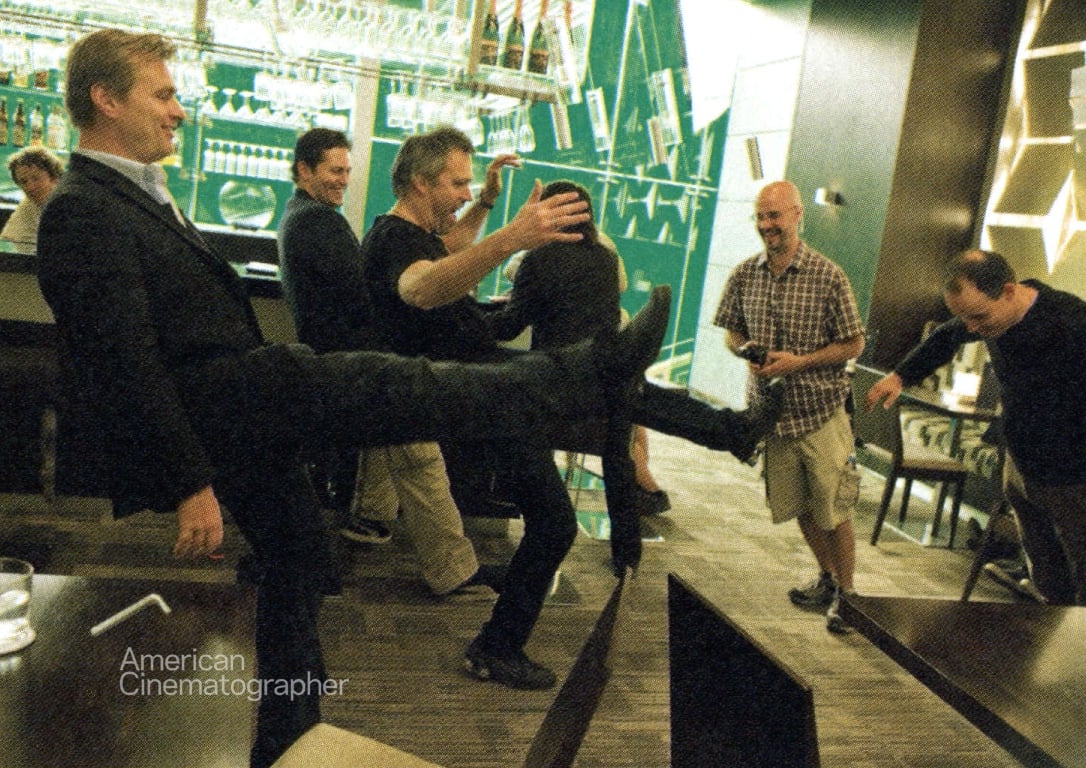
“I consider myself a naturalist in terms of lighting,” says Pfister. “I don’t often light in a stylized way. In certain situations, due to creative choices or natural beauty, things do end up looking stylized, but that happens naturally. It’s fun that Chris and I are able to make big studio films using this approach.
“I’m always fighting to keep things from becoming overly complicated,” continues the cinematographer. “I never want things to look over lit — or lit, for that matter. The trick is to work quickly and simply while getting results that don’t look as though they were rushed. I think it goes back to my training as a news and documentary cameraman. In those situations, you learn to find the beauty in natural light. You start with the simplest terms: which direction to look, the time of day, single or multiple sources. You take note of what works in real life, and you form an opinion according to your taste. I take that with me not only to practical locations but also to the stage, even though we have the advantage of being able to design the stage situations.”
Pfister maintains that operating the camera is integral to his approach. “In good photography, I can’t distinguish between good lighting and good composition; they work in conjunction. When it comes to handheld work, I always want to operate myself because I can change my mind and react at any given moment. Chris and I have a general formula for covering action — from behind, from the front, and then bridging things together with different sizes. Operating allows me to adapt within this formula as the material, the drama, the lighting and the environment change.”
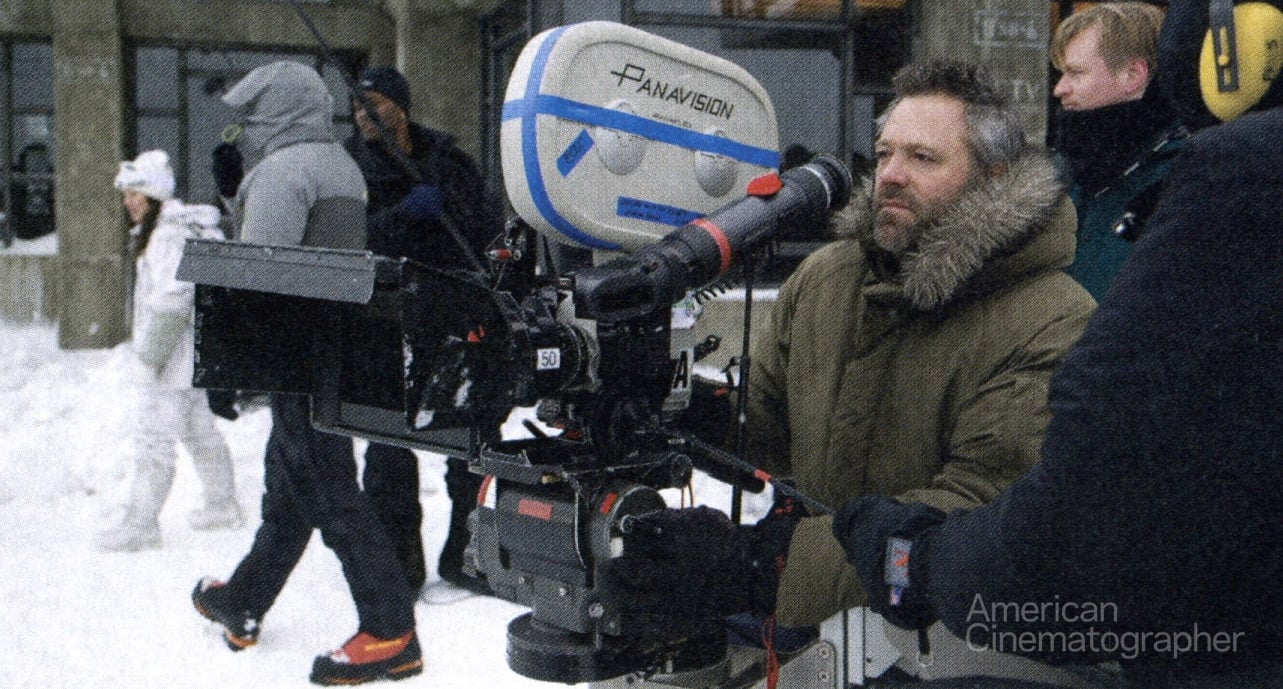
Inception‘s post phase involved multiple facilities. According to post supervisor David Hall, the two Phantom HD shots that made it into the final cut were sent to Double Negative in London and finished as visual-effects shots. The 65mm negative was scanned at 6K at DKP 70mm Inc. under the watchful eye of company president David Keighley. Those 6K files were then turned over to Technicolor in Hollywood, where a team extracted from the 6K data to generate 4K 35 mm filmouts that could be combined with the native 35mm footage. Pfister did all of the color timing photochemically at Technicolor, working with longtime collaborator David Orr. In addition to 35mm and digital-cinema presentations, Inception will be released on 70mm Imax in select markets, and DKP 70mm Inc. scanned the 35mm color-timed interpositives to create those prints.
“The photochemical process is quite simple and works well for us,” notes Pfister. “I put a lot of care into the color balance and exposure during filming, and that limits the manipulation required in post. If we want a scene to have more contrast, we accomplish that with lighting, wardrobe and set design. We were able to time this entire film in just three check prints. That’s about half the time of the average digital intermediate.”
